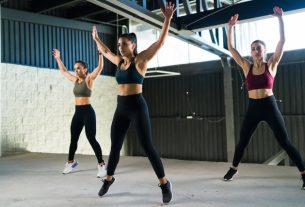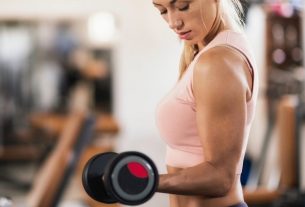Calisthenics is a training method that uses your own body weight to work on muscular strength and endurance, without the need for gym equipment.
In addition to increasing strength, endurance and body awareness, calisthenics increases flexibility and mobility. Therefore, calisthenics techniques are incorporated into some sports, such as crossfitfunctional training or gymnastics, mainly.
It is important that calisthenics exercises are carried out under the guidance of a qualified instructor, to ensure that the techniques are being performed correctly, that there is a lower risk of injury and that the greatest amount of benefits can be achieved.
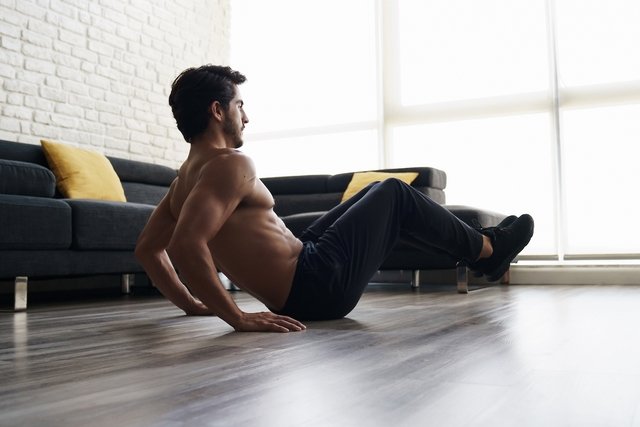
8 main benefits of calisthenics
The main health benefits of calisthenics are:
- Increased flexibility and joint mobility;
- Increased resistance and muscular strength;
- Greater body awareness;
- Increase in muscle mass;
- Activation of metabolism;
- Increased energy expenditure and decreased fat percentage;
- Development of motor coordination;
- Better body balance.
Furthermore, as calisthenics does not require gym equipment to be practiced, this type of activity can be carried out in any environment, which means it is not a monotonous activity.
Calisthenics Exercises for Beginners
This exercise routine helps to work the entire body, stimulating the muscles in the legs, abdomen, arms, back and chest, and was created for those who are starting out in this type of training, as it requires a lower level of strength, agility and flexibility.
It is recommended to repeat this routine up to 3 times, resting 4 minutes between each one and 30 seconds to 1 minute between each exercise.
1. Sit against the wall
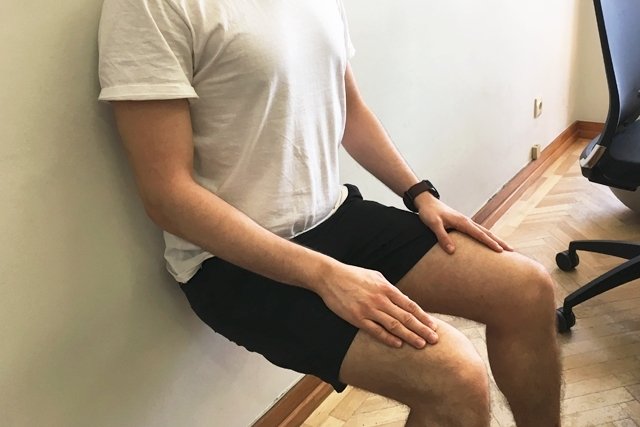
To do this exercise, stand against a wall, and then place both feet about 60 cm further forward, without removing your back and butt from the wall. In this position, slide your butt along the wall until your knees are at 90º. Hold the position for about 30 seconds.
This exercise is similar to the squat, mainly working the gluteal and thigh muscles, but without causing wear and tear on the knee, making it a good option for those with injuries to this joint.
2. Squats
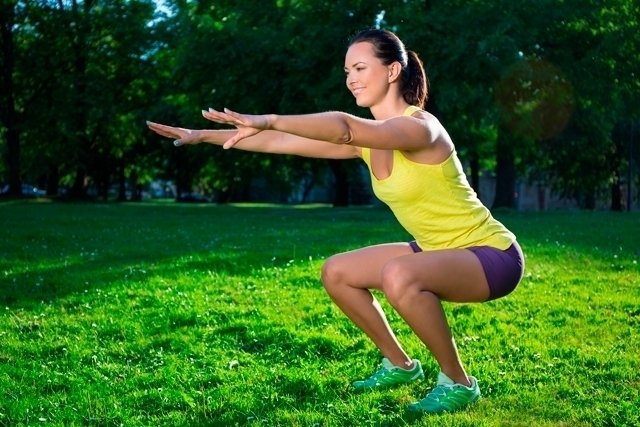
Squats are a classic type of exercise, but they are great for working almost all of the leg muscles and glutes. To do it correctly, you must stand with your feet shoulder-width apart, then squat with your butt back and your back straight, until your knees are at 90º, and return to the starting position, keeping your legs slightly semi-flexed.
You should repeat this exercise 8 to 12 times in each routine. One way to intensify the exercise is to hold a weight in front of the body and/or perform the slower downward movement.
3. Pull
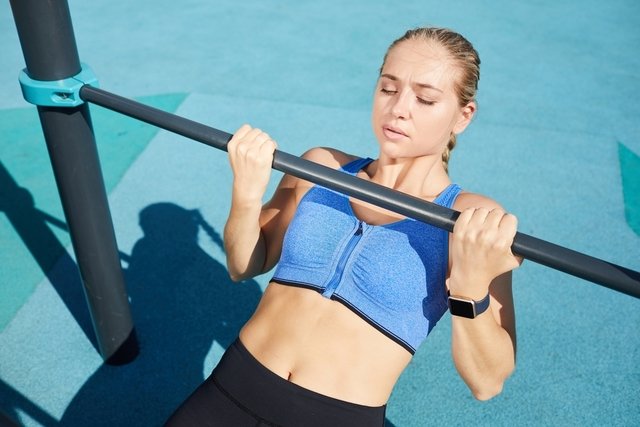
The pull-up is a great exercise for strengthening the chest, back and shoulders, and can be done with a low or high bar. The low bar pull-down, which is close to the hip height, is interesting for beginners, as it is possible to maintain contact with the floor throughout the exercise.
To perform the low bar pull-down, the person must hold the bar at shoulder width and position the body so that the legs are straight or semi-flexed. Then, you must pull your body, trying to get your head above the bar.
Another more advanced pull option is using the high bar, in which the person must grab the bar, taking their feet completely off the ground, and place their hands slightly wider than shoulder-width apart, and pull the body upwards until the bar comes close to your chin, performing the movement 3 to 5 times. Initially, you can do the exercise with the help of an elastic band, which must be attached to the bar and the person must “step” on the elastic band, which helps with the upward movement.
4. Non-bench triceps
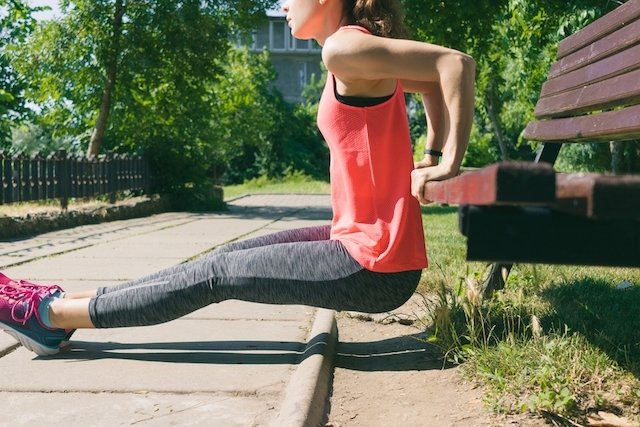
To do the triceps on the bench, you must rest both hands on a bench or chair and then bend your legs slightly in front of the body, bring your feet together and point them upwards. Then, lower your body until your elbows are at a 90º angle, and go back up. Ideally, both hands should be placed at a distance from the buttocks.
To make the movement more difficult, you can extend your leg, making it necessary to exert greater force to perform the exercise.
5. Push-ups
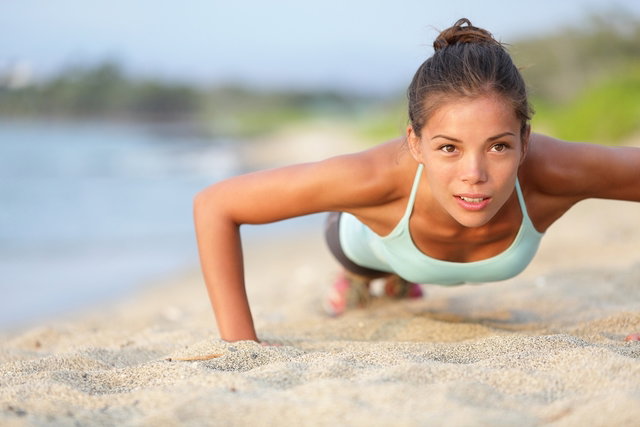
To do the push-up, you must lie on the floor, place your arms shoulder-width apart and place your hands next to your chest. Then, you must raise your body, as in a plank, and lower your body until your elbows are at a 90º angle.
Initially, it is possible to perform the exercise with your knees resting on the floor and, as you understand how the exercise is done and it becomes easier to perform the recommended number of push-ups, you can try doing the push-up with your knees off the floor. .
During the entire exercise it is very important to keep your abdominal muscles contracted to keep your body completely straight and avoid back injuries. This exercise is great for strengthening your arms and back, as well as your chest.
6. Abdominal
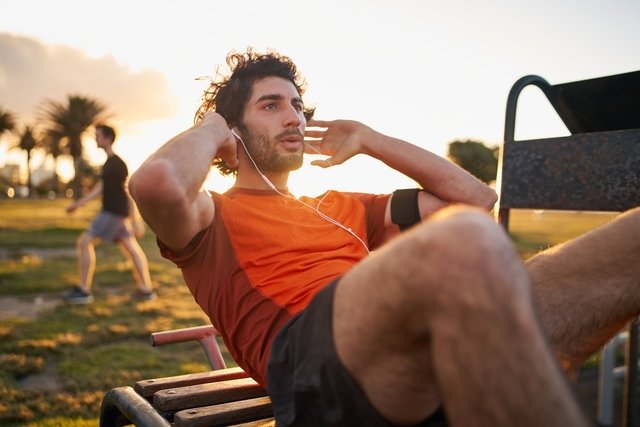
Abdominals for beginners must be done on the floor, with the legs bent, and the person must activate the abdomen to lift the upper part of the back off the floor.
Another abdominal exercise for beginners is the rowing abdominal exercise, in which the person must lie down with their stomach up and their arms above their head and activate their abdomen so that they can make the movement of hugging their knees while lifting their back. from the floor, returning to the starting position and performing the movement again.
As you manage to strengthen your abdominal muscles, you can do the exercise on the bar, in which the person must hold on to the bar and pull their knees up, bending them until they touch the chest or until they are at a 90º angle. . Repeat 8 to 10 times.
One way to increase the difficulty is to keep your legs straight and pull them up, without bending your knees, until you form a 90º angle with your butt.
7. Plank
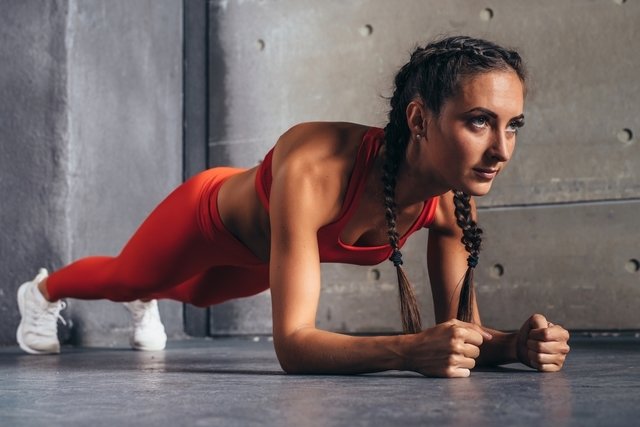
The plank is also an exercise that can be included in the calisthenics workout routine for beginners. To do this exercise, the person must lie down and support their body weight on their hands, or forearms, and feet, maintaining the position for 30 seconds to 1 minute, while keeping their abdominal muscles contracted.
It is also possible to add plank variations to your routine, such as a side plank and plank with three or two supports, as this makes it possible to intensify the exercise.

Sign up for our newsletter and stay up to date with exclusive news
that can transform your routine!
Warning: Undefined array key "title" in /home/storelat/public_html/wp-content/plugins/link-whisper-premium/templates/frontend/related-posts.php on line 12
Warning: Undefined array key "title_tag" in /home/storelat/public_html/wp-content/plugins/link-whisper-premium/templates/frontend/related-posts.php on line 13

